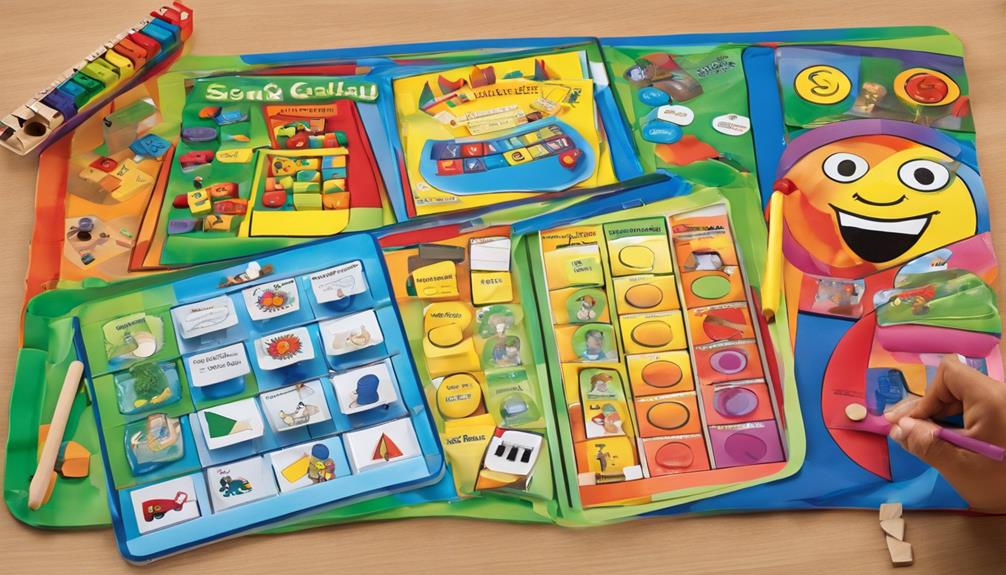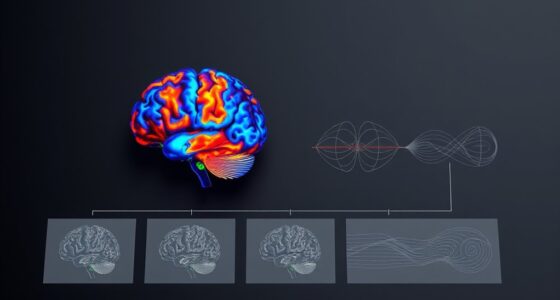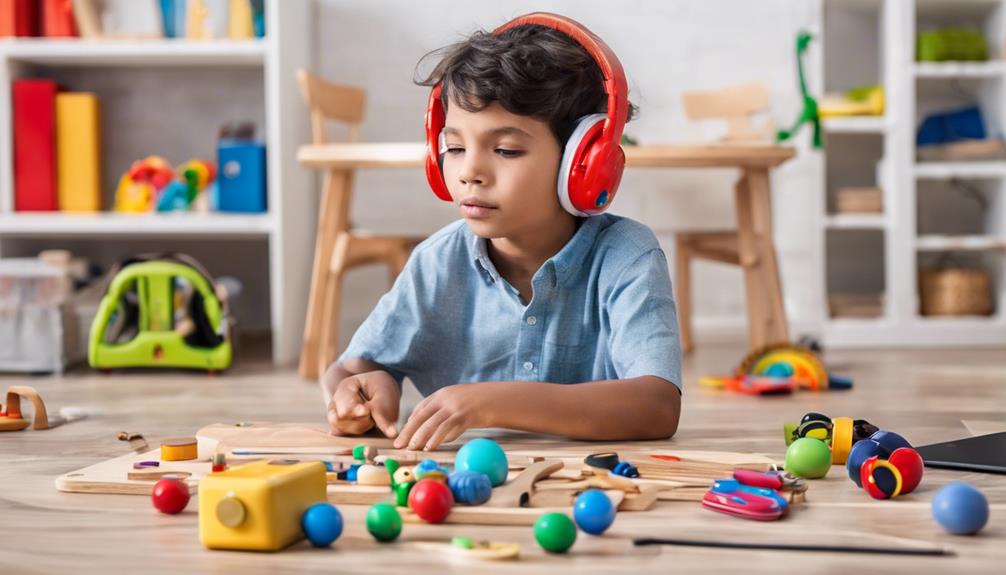As we reflect on the impact of well-crafted Auditory Verbal Therapy lesson plans, we recognize the significance of structuring sessions to optimize learning outcomes. Beginning with clear objectives tailored to each child's unique needs ensures a solid foundation for progress.
However, the question arises: how can we effectively implement these strategies to enhance auditory skills and foster learning success in children with hearing loss? Let's explore practical approaches and key considerations that can drive meaningful advancements in therapy sessions and ultimately contribute to overall educational achievements.
Key Takeaways
- Tailoring individualized plans optimizes progress and skill development.
- Targeted activities enhance auditory, speech, and language goals effectively.
- Strategies focus on improving auditory skills and language comprehension.
- Personalized approaches ensure engagement, motivation, and tailored learning outcomes.
Importance of Lesson Planning
Lesson planning is crucial in Auditory Verbal Therapy as it ensures a structured and effective approach to therapy sessions for children with hearing loss. By meticulously planning each session, we maximize learning opportunities for our young learners, enabling us to track progress and adjust strategies as needed.
Through well-crafted lesson plans, we establish clear objectives that align with the child's speech and language development goals, fostering the acquisition of essential auditory skills. Moreover, these plans facilitate therapist-parent collaboration, encouraging consistent practice at home to reinforce communication skills outside of therapy sessions.
Our tailored activities target various auditory-verbal skills, promoting comprehensive language acquisition and auditory skill development. With a thoughtfully designed lesson plan, we create a conducive environment for smooth session flow, engagement, and ultimately, the advancement of our children with hearing loss towards their communication goals.
Tailoring Plans to Individual Needs

As we tailor auditory-verbal therapy plans to individual needs, our focus shifts towards assessing the child's current auditory and language skills to guide targeted development effectively. When creating personalized plans for children, we consider various aspects to ensure the therapy is tailored to their specific requirements. This approach allows us to address their unique strengths and challenges, maximizing progress and engagement throughout the learning process.
Here are some key factors we take into account:
- Auditory Discrimination: Assessing the child's ability to distinguish between different sounds.
- Language Comprehension: Evaluating how well the child understands spoken language.
- Speech Production: Targeting areas for improvement in producing clear and intelligible speech.
- Hearing Technology: Considering the use of devices like hearing aids or cochlear implants.
- Communication Goals: Establishing objectives for enhancing overall communication skills.
Incorporating Targeted Activities
Incorporating targeted activities in auditory-verbal therapy involves designing tailored exercises to address specific auditory, speech, language, and cognitive goals in each session. These activities aim to enhance listening skills, auditory feedback, language development, speech sounds, auditory processing, language skills, and phonological awareness. By incorporating interactive games and structured exercises such as sound matching, syllable segmentation, and phoneme blending, therapists can create engaging experiences that strengthen these skills. It's crucial to align these activities with individualized learning objectives to ensure maximum effectiveness in auditory verbal therapy sessions.
Using a variety of activities that encourage active listening and sound discrimination, therapists can help children with hearing loss improve their auditory processing and language comprehension. By providing multi-sensory experiences, therapists can create a dynamic learning environment that supports holistic development. These targeted activities not only make therapy sessions more engaging but also play a vital role in achieving positive outcomes in auditory-verbal therapy.
Strategies for Enhancing Auditory Skills

Enhancing auditory skills is fundamental in fostering language development and communication abilities in children with hearing loss. Implementing strategies to enhance auditory skills can significantly impact cognitive development and language skills. Here are some evidence-based strategies for enhancing auditory skills in children with hearing loss:
- Engage in auditory identification activities to aid vocabulary development and language skills.
- Focus on phonological awareness at the syllable and phoneme level to improve oral and written language mastery.
- Utilize auditory-verbal techniques such as speech babble and word manipulation exercises to boost phonological awareness skills effectively.
- Incorporate targeted interventions and structured activities to enhance auditory awareness and discrimination for improved language comprehension.
- Implement sound sorting activities to enhance auditory skills and support vocabulary development.
Personalization for Learning Success
For optimal learning outcomes in auditory verbal therapy, tailoring intervention plans to the unique needs and abilities of each child with hearing loss is essential. Personalization plays a crucial role in creating individualized lesson plans that consider a child's auditory, speech, language, and cognitive skills.
By customizing activities and techniques to cater to the child's specific goals and learning style, personalized therapy sessions enhance engagement, motivation, and progress in developing spoken language skills. This tailored approach fosters a supportive and effective learning environment, maximizing the child's potential for successful auditory-verbal skill development.
Through the implementation of personalized intervention plans, the child receives targeted support that addresses their unique requirements, ultimately leading to optimal learning outcomes in auditory verbal therapy. By focusing on personalization, we can ensure that each child's journey towards enhancing their auditory skills is tailored to their individual needs and abilities, promoting a more effective and engaging learning experience.
Frequently Asked Questions
What Is the Strategy of Auditory-Verbal Therapy?
We believe the strategy of auditory-verbal therapy revolves around harnessing residual hearing to develop spoken language skills in children with hearing loss. This therapy focuses on teaching children to listen and speak effectively, aiming for independence in communication.
What Is the Efficacy of Auditory-Verbal Therapy?
The efficacy of Auditory-Verbal Therapy (AVT) is well-documented, showing significant improvements in speech and language skills for children with hearing loss. Through a family-centered approach, AVT helps children integrate successfully into mainstream schools, fostering positive social and emotional outcomes.
Early intervention with AVT is critical for enhancing speech, social development, and interaction in children with hearing loss. AVT empowers individuals, promotes independence, and tailors therapy to individual needs, ensuring optimal outcomes.
What Are the Goals of Avt?
The goals of AVT include developing spoken language skills in children with hearing loss. AVT aims to utilize residual hearing for speech and language abilities to help children become independent communicators. It focuses on achieving age-appropriate listening and spoken language skills through individualized intervention plans.
Early detection and intervention are emphasized for optimal language development, utilizing sound for speech, social, and interactional growth. AVT benefits children by improving speech and language skills, facilitating integration into mainstream schools, and enhancing social and emotional outcomes.
What Are the Principles of Avt?
The principles of AVT emphasize developing spoken language skills in children with hearing loss by utilizing residual hearing for communication. AVT focuses on early intervention, family-centered approaches, individualized plans, and the belief that all children can learn to listen and speak.
It empowers individuals, strengthens family involvement, and tailors therapy to individual needs for optimal outcomes in integrating into mainstream schools and enhancing social and emotional development.
Conclusion
In the symphony of auditory verbal therapy, our lesson plans serve as the conductor, guiding each child towards the crescendo of learning success.
Just as each note plays a crucial role in creating a harmonious melody, our tailored activities and strategies work together to unlock the potential within each child with hearing loss.
Through personalized and engaging sessions, we aim to cultivate the seeds of language, communication, and overall learning growth, leading to a beautiful and fulfilling journey ahead.











